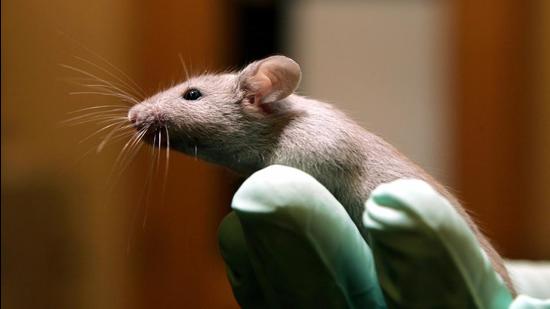Scientifically Speaking | Anti-ageing: The secrets of youth in blood and faeces
In research published in Nature Aging, John Cryan and his colleagues at University College, Cork, Ireland found that faecal transplants from younger mice could refresh many of the signs of ageing found in older mice
Researchers are finding clues to youthfulness and longevity in unexpected places, namely in the blood and faeces of young animals. These anti-ageing factors can be transferred to older animals to rejuvenate them. These results may shake up what we know about human ageing too.

Ageing isn’t a disease, but rather a natural biological condition. But health and mental declines during ageing can lead to a lower quality of life in advancing years. As a result, one of the goals of longevity research isn’t simply to extend lifespan, but to increase healthspan — the healthy years of life.
Evidence-based anti-ageing research is only a few decades old because ageing is not considered a disease. And the timeframes to conduct ageing research were considered too long for standard clinical trials because it would take decades to track humans to gather meaningful data.
But all of this is changing now. There are biological signatures of ageing and age-related diseases that are being tracked over time. There is a greater appreciation that ageing is associated with many diseases and declines in cognitive and physical skills. Data science is helping to sort through large amounts of genetic data gathered from people to find why some people age faster than others. In addition, there are many aspects of human ageing that can be studied in fast-growing laboratory animals like mice, which can be manipulated genetically and surgically.
In research published in Nature Aging on August 9, John Cryan and his colleagues at University College, Cork, Ireland found that faecal transplants from younger mice could refresh many of the signs of ageing found in older mice. The slurry caused the reversal of age-related inflammation in mice and improvements in brain activity, particularly in the part of the brain involved in memory, learning, and anxiety levels.
The microbes in the gut affect health through the production of chemicals that enter the bloodstream. A few years ago, Cryan showed that the gut can influence the brain through the vagus nerve which connects the two.
Earlier work established a connection between the diversity and type of microbes harboured in the gut and digestive, brain, and immune health. This diversity is usually beneficial and can be expanded at any age through diets that include fibres that feed carbohydrate-digesting microbes. However, microbial diversity also declines due to antibiotic use, poor health, and age.
Faecal transplants involve the transfer of stool from a donor to a recipient. While the procedure itself may not be a topic for polite conversation, faecal transplants work better than antibiotics in treating people suffering from Clostridioides difficile infections. These infections occur when these deadly bacteria colonise the gut because beneficial microbes that are typically present are missing. A faecal transplant causes C difficile to get displaced by beneficial microbes from the donor.
The current study on the anti-ageing effects of faecal transplants from younger mice to older ones adds to the mountain of evidence demonstrating that the effects of gut microbes go beyond the gut. The next step will be to identify which microbes and their chemical signatures are associated with youthful rejuvenation.
Another method used in ageing research in mice is parabiosis which involves attaching two animals together surgically. Although parabiosis sounds macabre, it has also yielded some promising results. Scientists have joined blood vessels of younger mice to that of older mice. They have found that there are factors in the blood of young mice that rejuvenate the organs of older mice making them healthier. These factors help cells and tissues to repair damage and to grow more slowly.
Blood and plasma transfusion also has rejuvenating effects on the brain, heart, liver, and muscle tissues in mice. Conversely, factors in older mice accelerate the premature ageing of younger mice.
In another research article published on December 6 in Nature Aging, Fabrisia Ambrosio and her colleagues at the University of Pittsburgh, found that blood from younger mice contain vesicles with genetic instructions on how to make a protein with anti-ageing effects on muscles. Levels of this protein, called Klotho, decrease with age. Klotho is also found in humans in many parts of the body where it has essential functions.
Older mice that had molecular instructions on how to make Klotho (transferred from the vesicles in the blood of younger mice) were able to make better muscles. But if the blood didn’t have these vesicles from younger blood there was no anti-ageing effect.
It’s important to state the obvious: These studies were conducted in laboratory mice, and mice aren’t people. Translating studies of young faeces and blood samples in mice to clinical products in humans is a long and arduous path. How long the anti-ageing effects last and whether these procedures cause an actual reversal of ageing or slowing down of certain steps will require further investigation.
With these caveats in mind, these are important studies that provide clear future directions in anti-ageing research. Faecal transplants and blood transfusions in people may not be practical or advisable for age-related declines. But they represent an important step in figuring out why these declines occur after all. This could then lead to more targeted drugs for people.
Anirban Mahapatra, a scientist by training, is the author of COVID-19: Separating Fact From Fiction.
The views expressed are personal
Continue reading with HT Premium Subscription




